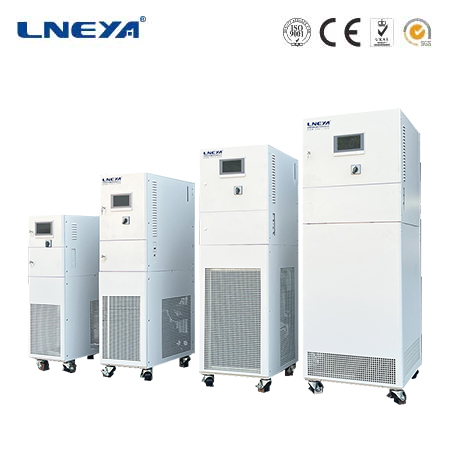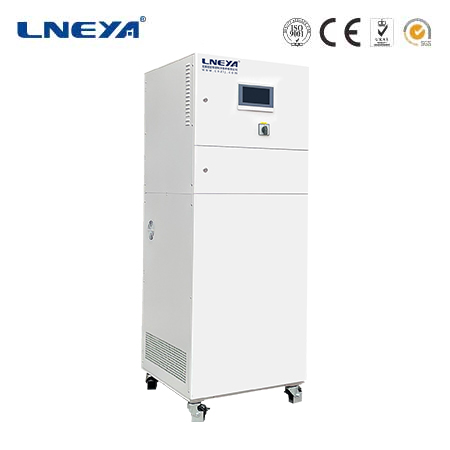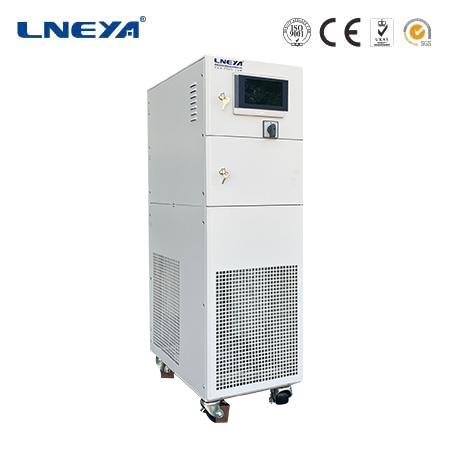small heating system
What are Small Heating Systems?
Small heating systems are self – contained or integrated heating units designed to meet the heating requirements of relatively small – sized areas. These areas can range from individual rooms in a house, small apartments, compact offices, to cabins and other small – scale buildings. The primary function of these systems is to raise the temperature of the indoor environment, providing comfort during cold weather conditions.

Types of Small Heating Systems
Electric Heating Systems
Working Principle
Electric heating systems operate on the principle of Joule heating. When an electric current passes through a resistive heating element, such as nichrome wire, the electrical energy is converted into heat. This heat is then transferred to the surrounding air or a heat – carrying medium.
There are different types of electric heating systems. For example, electric baseboard heaters consist of a long, narrow housing that contains heating elements. As the elements heat up, the air in contact with them rises, creating a convection current that circulates warm air throughout the room.
Electric space heaters are also popular. They can be portable, such as ceramic or oil – filled space heaters. Ceramic heaters use a ceramic heating element which heats up quickly, while oil – filled heaters have a reservoir of oil that is heated by an electric element. The oil retains heat well, providing a more consistent heat output over time.
Advantages
Electric heating systems are generally easy to install, especially portable models. They can be plugged into a standard electrical outlet, requiring minimal additional wiring in most cases.
They offer precise temperature control. Many electric heaters come with thermostats that allow users to set the desired temperature accurately.
They produce no emissions indoors, making them a clean option for indoor heating.
Gas – Fired Heating Systems

Working Principle
Gas – fired heating systems rely on the combustion of natural gas or propane. In a gas furnace, for example, gas is mixed with air in a combustion chamber. The mixture is ignited by a pilot light or an electronic ignition system. The resulting combustion produces heat, which is then transferred to a heat exchanger.
The heat exchanger warms the air that is drawn in from the room. A blower fan then forces the heated air through a ductwork system, distributing it throughout the building. In some small – scale gas – fired systems, like wall – mounted gas heaters, the combustion process is more direct. The heat is radiated and convected directly into the room without the need for extensive ductwork.
Advantages
Gas – fired heating systems can be more cost – effective to operate in areas where natural gas or propane is readily available and inexpensive.
They can provide quick heat. Once the combustion process starts, the heat output can be felt relatively rapidly.
In some cases, gas – fired systems can have a higher energy – efficiency rating compared to electric heating systems, especially when properly maintained.
Oil – Fired Heating Systems
Working Principle
Oil – fired heating systems burn fuel oil, typically a type of kerosene or diesel – like fuel. Similar to gas – fired systems, the fuel is atomized and mixed with air in a combustion chamber. An ignition source, such as an electric spark, starts the combustion process.
The heat generated from the combustion is transferred to a heat exchanger. The heat exchanger then warms the air or a heat – transfer fluid, such as water in an oil – fired boiler system. The heated fluid can be used to provide space heating through radiators or underfloor heating systems, or for domestic hot water needs.
Advantages
Oil – fired heating systems can store a significant amount of fuel on – site, which can be an advantage in areas where fuel delivery may be less frequent or in case of power outages (as they do not rely on electricity for fuel supply).
They can offer high heat output, making them suitable for heating larger small – scale spaces or those with high heat loss requirements.
Components of Small Heating Systems
Heat Source
Electric Heating Elements
As mentioned earlier, in electric heating systems, the heating element is the core of the heat – generation process. Different materials are used for heating elements depending on the application. Nichrome wire is common due to its high resistivity and ability to withstand high temperatures without melting or oxidizing easily.
Combustion Chambers (Gas and Oil – Fired Systems)
In gas – fired and oil – fired systems, the combustion chamber is where the fuel is burned. It is designed to ensure efficient combustion by providing the right mixture of fuel and air. The chamber is often made of heat – resistant materials such as stainless steel or refractory ceramics to withstand the high temperatures generated during combustion.
Heat Exchanger

Function
The heat exchanger’s role is to transfer the heat generated by the heat source to the medium that will distribute the heat, usually air or water. In air – based heating systems, the heat exchanger warms the air that passes over it. In water – based systems, such as boilers, the heat exchanger warms the water, which can then be used for space heating or to produce hot water.
Materials and Design
Heat exchangers are typically made of materials with high thermal conductivity, such as copper or aluminum. Their design varies depending on the type of heating system. For example, in a gas – fired furnace, the heat exchanger may be a series of metal tubes or plates arranged in a way that maximizes the surface area for heat transfer while minimizing the resistance to air flow.
Distribution System
Ductwork (Air – Based Systems)
In air – based heating systems, ductwork is used to distribute the heated air. Ducts are usually made of sheet metal, fiberglass, or flexible plastic materials. They are designed to deliver the heated air evenly to different parts of the building. Dampers can be installed in the ducts to control the flow of air to specific areas, allowing for zone – based heating.
Piping (Water – Based Systems)
In water – based heating systems, piping is used to circulate the heated water. Pipes can be made of copper, PEX (cross – linked polyethylene), or other suitable materials. The piping system connects the boiler or heat source to the radiators or underfloor heating elements, ensuring the efficient transfer of heat throughout the building.
Applications of Small Heating Systems
Residential Applications
Small Apartments and Houses
Small heating systems are ideal for small apartments where a central heating system may be too large and costly to install. Electric baseboard heaters or portable space heaters can provide targeted heating for individual rooms, allowing tenants to control the temperature in each area according to their needs.
In small houses, a gas – fired or oil – fired furnace can be a more efficient option for heating the entire living space. These systems can be sized appropriately to meet the heating requirements of the house, providing warmth during cold seasons.
Home Offices and Guest Rooms
For home offices, a small electric space heater can be used to keep the work area warm without heating the entire house. This can save energy and costs. Guest rooms can also be equipped with portable heating systems to ensure the comfort of visitors, especially during cold weather.
Commercial Applications
Small Retail Stores and Offices
Small retail stores and offices can benefit from small heating systems. A gas – fired wall – mounted heater can provide sufficient heat for a small storefront, creating a comfortable environment for customers and employees. In small offices, electric heating systems can be used to supplement or replace a central heating system that may not be able to adequately heat certain areas.
Restaurants and Cafés
Restaurants and cafés often have specific heating needs for their dining areas and kitchens. Small heating systems can be used to heat the dining area during cold weather, while also ensuring that the kitchen equipment, which may generate a lot of heat, does not overheat the entire space. For example, a combination of gas – fired heaters for the dining area and electric heating systems for specific kitchen equipment can be used.
Industrial Applications
Workshops and Small Factories
In workshops and small factories, small heating systems can be used to heat specific work areas. For example, in a woodworking workshop, an oil – fired or gas – fired unit heater can be installed to keep the working environment warm, especially during cold winter months. This helps to improve the comfort of workers and can also prevent issues such as cold – related damage to materials or equipment.
Cold Storage and Warehouse Micro – Environments
In some cases, small heating systems may be used in cold storage or warehouse areas to maintain a specific temperature range in certain sections. For example, if there are areas where temperature – sensitive products are stored, a small heating system can be installed to prevent the temperature from dropping too low, ensuring the integrity of the products.
Advantages of Small Heating Systems
Energy – Efficiency in Small Spaces
Small heating systems are designed to be highly efficient in heating small – to – medium – sized areas. Since they are sized according to the specific heating requirements of the space, they do not waste energy by over – heating large areas. For example, an electric space heater used in a small room only heats that room, rather than consuming energy to heat an entire building as a central heating system might.
Easy Installation
Many small heating systems, especially portable or self – contained units, are relatively easy to install. Electric space heaters can be simply plugged in, and some gas – fired wall – mounted heaters can be installed with minimal modifications to the building structure. This makes them a convenient option for both homeowners and businesses looking for quick heating solutions.
Cost – Effectiveness
For small – scale heating needs, small heating systems can be more cost – effective. They often require less initial investment compared to large – scale central heating systems. Additionally, their operating costs can be lower, especially if they are used to heat only the areas that need to be warm, rather than an entire building.
Conclusion
Small heating systems offer a wide range of options for heating small – to – medium – sized spaces. Whether it’s an electric, gas – fired, or oil – fired system, each type has its own unique working principles, components, applications, and advantages. Understanding these aspects can help individuals and businesses make informed decisions when choosing a heating system that best suits their specific needs, space requirements, and budget. These systems play a crucial role in providing warmth and comfort in various settings, from residential homes to commercial and industrial micro – environments.
Related recommendations
2000 ton chiller
158Understanding 2000-Ton ChillersA 2000-ton chiller is an industrial-scale cooling system that provides significant cooling capacity for large buildings or complexes. These chillers are designed to ...
View detailshot water unit
156The Operation and Importance of Hot Water Units Hot water units are systems designed to heat water for a variety of uses, including domestic, commercial, and industrial applications. They can b...
View detailschiller 100 kw
248100 kW Chillers: Definition, Types, Efficiency, Market Trends, and Technical Specifications Definition of 100 kW Chillers A 100 kW chiller is an industrial-scale refrigeration system designe...
View detailstesting of sensors
232Introduction to Testing of Sensors Sensors are ubiquitous in modern technology, used in a wide array of applications from consumer electronics to industrial automation. The testing of these sen...
View details
 LNEYA Thermal Test Chillers
LNEYA Thermal Test Chillers






HelloPlease log in